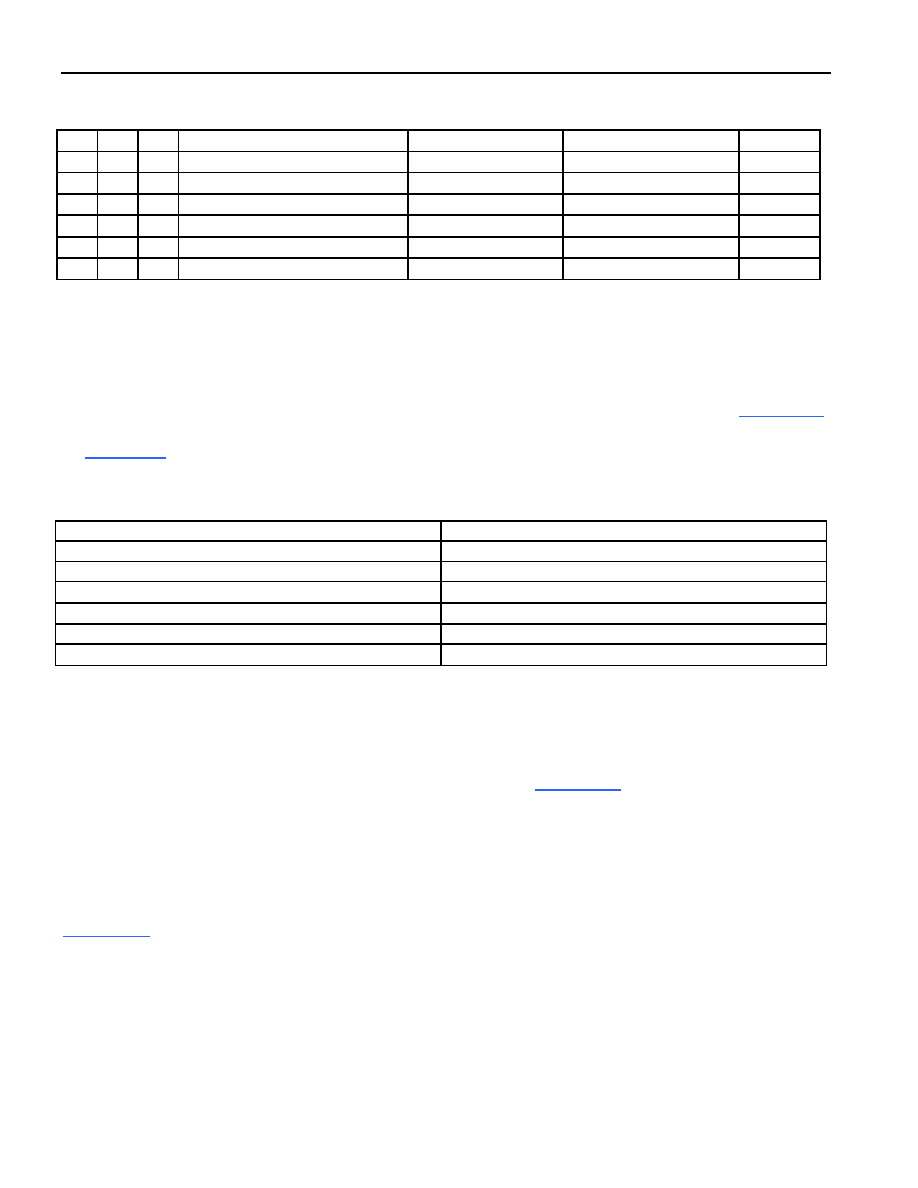- 您現(xiàn)在的位置:買賣IC網(wǎng) > PDF目錄1914 > DS2154LNA2+ (Maxim Integrated Products)IC TXRX E1 5V 100-LQFP PDF資料下載
參數(shù)資料
| 型號(hào): | DS2154LNA2+ |
| 廠商: | Maxim Integrated Products |
| 文件頁數(shù): | 106/124頁 |
| 文件大小: | 0K |
| 描述: | IC TXRX E1 5V 100-LQFP |
| 產(chǎn)品培訓(xùn)模塊: | Lead (SnPb) Finish for COTS Obsolescence Mitigation Program |
| 標(biāo)準(zhǔn)包裝: | 90 |
| 類型: | 收發(fā)器 |
| 驅(qū)動(dòng)器/接收器數(shù): | 1/1 |
| 規(guī)程: | E1 |
| 電源電壓: | 4.75 V ~ 5.25 V |
| 安裝類型: | 表面貼裝 |
| 封裝/外殼: | 100-LQFP |
| 供應(yīng)商設(shè)備封裝: | 100-LQFP(14x14) |
| 包裝: | 托盤 |
第1頁第2頁第3頁第4頁第5頁第6頁第7頁第8頁第9頁第10頁第11頁第12頁第13頁第14頁第15頁第16頁第17頁第18頁第19頁第20頁第21頁第22頁第23頁第24頁第25頁第26頁第27頁第28頁第29頁第30頁第31頁第32頁第33頁第34頁第35頁第36頁第37頁第38頁第39頁第40頁第41頁第42頁第43頁第44頁第45頁第46頁第47頁第48頁第49頁第50頁第51頁第52頁第53頁第54頁第55頁第56頁第57頁第58頁第59頁第60頁第61頁第62頁第63頁第64頁第65頁第66頁第67頁第68頁第69頁第70頁第71頁第72頁第73頁第74頁第75頁第76頁第77頁第78頁第79頁第80頁第81頁第82頁第83頁第84頁第85頁第86頁第87頁第88頁第89頁第90頁第91頁第92頁第93頁第94頁第95頁第96頁第97頁第98頁第99頁第100頁第101頁第102頁第103頁第104頁第105頁當(dāng)前第106頁第107頁第108頁第109頁第110頁第111頁第112頁第113頁第114頁第115頁第116頁第117頁第118頁第119頁第120頁第121頁第122頁第123頁第124頁

DS21354/DS21554 3.3V/5V E1 Single-Chip Transceivers
82 of 124
Table 15-2. Line Build-Out Select in LICR for the DS21354
L2
L1
L0
APPLICATION
TRANSFORMER
RETURN LOSS (dB)*
RT (
W)
**
0
75
W normal
1:2 step-up
N.M.
0
1
120
W normal
1:2 step-up
N.M.
0
1
0
75
W with protection resistors
1:2 step-up
N.M.
2.5
0
1
120
W with protection resistors
1:2 step-up
N.M.
2.5
1
0
75
W with high return loss
1:2 step-up
21
6.2
1
0
1
120
W with high return loss
1:2 step-up
21
11.6
* N.M. = Not Meaningful (return loss value too low for significance).
** Refer to Application Note 324 for details on E1 line interface design.
Due to the nature of the design of the transmitter in the DS21354/DS21554, very little jitter (less than
0.005 UIP-P broadband from 10Hz to 100kHz) is added to the jitter present on TCLK. Also, the waveform
created is independent of the duty cycle of TCLK. The transmitter in the device couples to the E1-
transmit-shielded twisted pair or coax via a 1:1.15 or 1:1.36 step-up transformer as shown in Figure 15-1.
For the devices to create the proper waveforms, the transformer used must meet the specifications listed
in Table 15-3. The line driver in the device contains a current limiter that prevents more than 50mA
(RMS) from being sourced in a 1
W load.
Table 15-3. Transformer Specifications
SPECIFICATION
RECOMMENDED VALUE
Turns Ratio for DS21354
1:1 (receive) and 1:2 (transmit) ±3%
Turns Ratio for DS21554
1:1 (receive) and 1:1.15 or 1:1.36 (transmit) ±3%
Primary Inductance
600
mH minimum
Leakage Inductance
1.0
mH maximum
Intertwining Capacitance
40pF maximum
DC Resistance
1.2
W maximum
15.3.
Jitter Attenuator
The DS21354/DS21554 contain an on-board jitter attenuator that can be set to a depth of either 32 or 128
bits via the JABDS bit in the Line Interface Control Register (LICR). The 128-bit mode is used in
applications where large excursions of wander are expected. The 32-bit mode is used in delay-sensitive
applications. The characteristics of the attenuation are shown in Figure 15-4. The jitter attenuator can be
placed in either the receive path or the transmit path by appropriately setting or clearing the JAS bit in the
LICR. Also, the jitter attenuator can be disabled (in effect, removed) by setting the DJA bit in the LICR.
For the jitter attenuator to properly operate, a 2.048MHz clock (±50ppm) must be applied at the MCLK
pin, or a crystal with similar characteristics must be applied across the MCLK and XTALD pins. If a
crystal is applied across the MCLK and XTALD pins, then the maximum effective series resistance
should be 30
W, and capacitors should be placed from each leg of the crystal to ground as shown in
Figure 15-2. On-board circuitry adjusts either the recovered clock from the clock/data recovery block or
the clock applied at the TCLKI pin to create a smooth jitter-free clock, which is used to clock data out of
the jitter attenuator FIFO. It is acceptable to provide a gapped/bursty clock at the TCLKI pin if the jitter
attenuator is placed on the transmit side. If the incoming jitter exceeds either 120 UIP-P (buffer depth is
128 bits) or 28 UIP-P (buffer depth is 32 bits), then the DS21354/DS21554 divide the internal nominal
32.768MHz clock by either 15 or 17 instead of the normal 16 to keep the buffer from overflowing. When
the device divides by either 15 or 17, it also sets the Jitter Attenuator Limit Trip (JALT) bit in the Receive
Information Register (RIR.5).
相關(guān)PDF資料 |
PDF描述 |
|---|---|
| DS2154L | IC TXRX E1 1CHIP 5V ENH 100-LQFP |
| DS2155LN | IC TXRX T1/E1/J1 1-CHIP 100-LQFP |
| DS2156LN+ | IC TXRX T1/E1/J1 1-CHIP 100-LQFP |
| DS2172T/T&R | IC TESTER BIT ERROR RATE 32-TQFP |
| DS2174QN+ | IC BERT ENHANCED 44-PLCC |
相關(guān)代理商/技術(shù)參數(shù) |
參數(shù)描述 |
|---|---|
| DS2154LNA2+ | 功能描述:網(wǎng)絡(luò)控制器與處理器 IC Enhanced E1 Transceiver RoHS:否 制造商:Micrel 產(chǎn)品:Controller Area Network (CAN) 收發(fā)器數(shù)量: 數(shù)據(jù)速率: 電源電流(最大值):595 mA 最大工作溫度:+ 85 C 安裝風(fēng)格:SMD/SMT 封裝 / 箱體:PBGA-400 封裝:Tray |
| DS2154LND2 | 功能描述:網(wǎng)絡(luò)控制器與處理器 IC RoHS:否 制造商:Micrel 產(chǎn)品:Controller Area Network (CAN) 收發(fā)器數(shù)量: 數(shù)據(jù)速率: 電源電流(最大值):595 mA 最大工作溫度:+ 85 C 安裝風(fēng)格:SMD/SMT 封裝 / 箱體:PBGA-400 封裝:Tray |
| DS2154LND2+ | 制造商:Maxim Integrated Products 功能描述:ENHANCED E1 SCT LQFP REVD2 IND LF - Rail/Tube |
| DS2155 | 制造商:DALLAS 制造商全稱:Dallas Semiconductor 功能描述:T1/E1/J1 Single-Chip Transceiver TDM/UTOPIA II Interface |
| DS2155_06 | 制造商:DALLAS 制造商全稱:Dallas Semiconductor 功能描述:T1/E1/J1 Single-Chip Transceiver |
發(fā)布緊急采購(gòu),3分鐘左右您將得到回復(fù)。